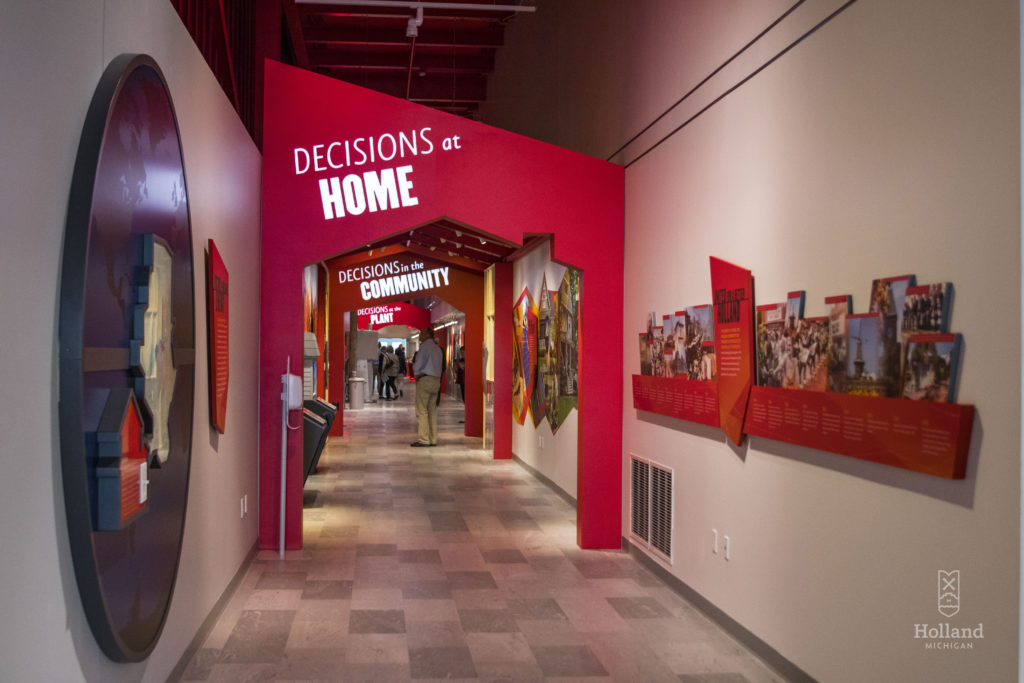Holland Energy Park
Population: 10,000+
Holland Board of Public Works (HBPW) celebrated the grand opening of the new Holland Energy Park (HEP) on October 2, 2017. The largest civic project in Holland’s history, HBPW built a 145-MW 2-on-1 combined-cycle natural gas power plant. Besides generating electricity, the plant provides heated water for the city’s signature snowmelt system by capturing waste heat from power generation.
Community leaders developed the design with three goals: Provide a sustainable, long-term power source. Be a destination that draws and connects people to the community. Be a gateway that enhances the entrance to the city and connecting to local trail systems.
HEP welcomes the public to its Visitor Center, where HBPW invested $1.3 million in creating an educational gallery of interactive displays on a variety of energy-related topics. The 20-acre site, once a decaying area, has been transformed into accessible natural areas connected by walking trails that circumnavigate the entire property.
Replicability:
As the first-ever Envision® Platinum-verified energy project, Holland Energy Park offers a blueprint for other utility companies to meet environmental objectives. Not only did Holland Board of Public Works (HBPW) build one of the most efficient plants, but they did so while restoring a rundown area within the city, rehabilitating the natural environment and integrating the plant with other sustainability efforts citywide. The Envision framework provided a structure that led the project team’s decision-making for processing demolition materials, selecting equipment and fixtures, handling wastewater, sources and usage, and other design and construction features. The process can be implemented at any point in a project’s lifecycle but is especially helpful and timely through the decision-making phase.Creativity and Originality:
Holland Energy Park is the first power plant to receive the Institute for Sustainable Infrastructure’s Envision® Platinum verification, validating the community’s 40-year plan to achieve a sustainable energy future and reduce energy demand throughout the city. The plant meets a number of environmental objectives, including:- a modern building design with an insulated and detailed building envelope,
- a 50 percent reduction in carbon emissions,
- the virtual elimination of solid particle pollutants,
- doubled efficiency of the previous plant,
- a one of a kind public space and trail system, and
- the latest combined-cycle natural gas generating technology.
Community Impact:
Bordered by 15 acres of scenic wetlands, the new community park features scenic overlooks, water features, and bike paths, and was planned as a natural segue into other community trails. It will soon connect the Outdoor Discovery Center Macatawa Greenway (ODCMG) trail system to Windmill Island Gardens. The project team took extreme measures to conserve wildlife. To begin, they completed a baseline biodiversity assessment, which inventoried animals in the habitat and the impacts of construction and plant operation on those animals. HBPW and the contractor teamed up with Holland Youth Connections (high school aged youth from Escape Ministries) and ODCMG to build bird and bat houses, clean up the trail, and restore wetlands. Prior to the completion of Holland Energy Park, there were 149 calls over five years to Holland’s Police Department from issues regarding the neighborhood where the plant resides today. Reports include larceny, noise, civil and animal complaints, threats, and breaking and entering. There have been no calls to date on the property; it has changed from a blighted neighborhood to a community asset. Cutting through the center of the plant, the “red spine” features a $1.2 million visitor center – an interactive space to learn about energy at home and in the community. Built with a community panel to determine the exhibits and learning experiences, the spine also functions as a science museum, offering views into the guts of the power plant, exhibits, and touch-screen stations that teach the public how the plant operates. Visitors can also play a game to create an energy efficient home. The project meets the three goals set by the blue-ribbon committee:- To be a world-class resource that provides sustainable, long-term energy and is an educational hub by educating the decision makers of tomorrow to make responsible energy production decisions.
- To be a destination that provides public activities to connect people to the community.
- To be a gateway – enhancing access to open space and allowing people to enjoy the area.



